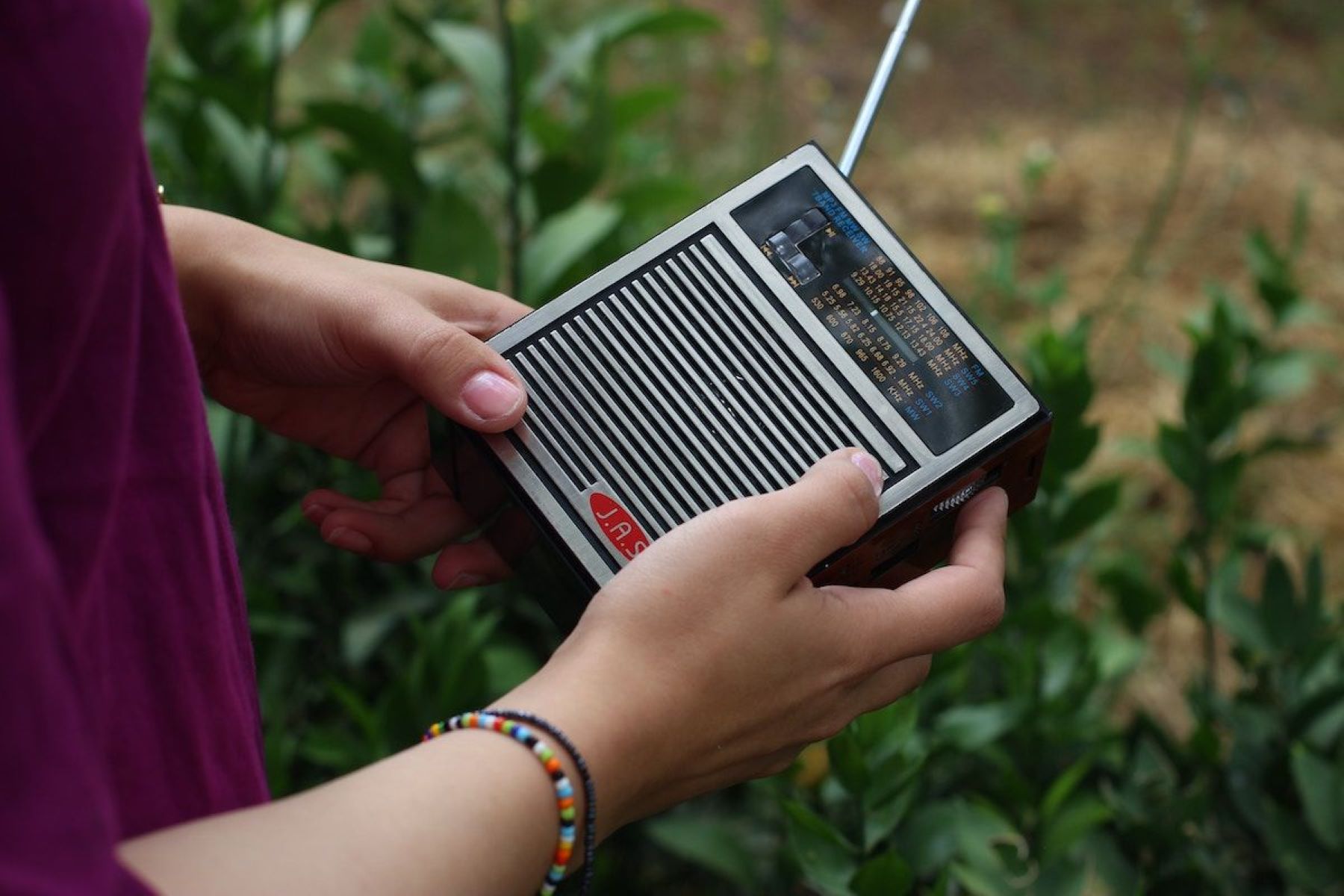Home>Entertainment>The Shocking Truth About Spirit Box Revealed!


Entertainment
The Shocking Truth About Spirit Box Revealed!
Published: January 30, 2024
Uncover the truth about spirit boxes and their impact on entertainment. Learn how this shocking revelation is changing the industry. Discover more here!
(Many of the links in this article redirect to a specific reviewed product. Your purchase of these products through affiliate links helps to generate commission for Regretless.com, at no extra cost. Learn more)
Table of Contents
Introduction
The world of the paranormal has long captivated human imagination, evoking a sense of mystery and curiosity. Within this realm, tools and devices have been developed to communicate with spirits and entities from the other side. One such tool that has gained significant attention in recent years is the Spirit Box. This intriguing device has sparked both fascination and skepticism, leading to heated debates and discussions within the paranormal community and beyond.
As we delve into the enigmatic world of the Spirit Box, we will uncover the mechanics behind this device, explore the controversies and misconceptions surrounding it, and examine the ethical considerations associated with its use. Whether you are a staunch believer in the supernatural or a skeptic seeking to unravel the mysteries behind paranormal phenomena, the revelations about Spirit Boxes are bound to pique your interest and challenge your preconceptions. Let's embark on this journey to unravel the shocking truth about Spirit Boxes and gain a deeper understanding of their significance in the realm of the unexplained.
What is a Spirit Box?
A Spirit Box, also known as a ghost box or Frank's box, is a device used in paranormal investigations to purportedly communicate with spirits. It is essentially a modified AM/FM radio that rapidly scans through radio frequencies, creating a constant stream of white noise. The theory behind the Spirit Box is that spirits can manipulate this white noise to generate coherent voices or messages, which can be heard through the device's speaker.
The design of a Spirit Box typically includes a tuning dial, volume control, and an integrated speaker. Some advanced models may also feature additional controls to adjust the scanning speed and frequency range. The device is believed to provide a platform for spirits to interact with the living by manipulating radio frequencies to convey intelligible responses.
Spirit Boxes have gained popularity among paranormal investigators and enthusiasts due to their perceived ability to facilitate real-time communication with the spirit world. The allure of potentially receiving direct responses from entities beyond the physical realm has led to the widespread use of Spirit Boxes during ghost hunts, seances, and other paranormal explorations.
While the concept of Spirit Boxes may seem novel to some, their roots can be traced back to the early 20th century. Inventors and researchers have long sought to develop devices that could enable communication with the deceased, and the Spirit Box represents a modern iteration of these endeavors.
The functionality of Spirit Boxes has sparked intense debates within the paranormal community, with proponents hailing them as revolutionary tools for spirit communication and skeptics dismissing them as mere products of suggestion and auditory pareidolia. Regardless of one's stance, the concept of the Spirit Box continues to captivate the imagination and fuel discussions about the nature of paranormal phenomena.
As we unravel the mechanics and controversies surrounding Spirit Boxes, we will gain a deeper appreciation for the complexities of their use and the implications they hold for our understanding of the supernatural.
How Does a Spirit Box Work?
A Spirit Box operates on the premise that spirits can manipulate radio frequencies to communicate with the living. The device rapidly scans through AM and FM radio bands, creating a continuous stream of white noise. This white noise serves as an auditory canvas upon which spirits are believed to imprint their messages. As the radio frequencies cycle through the spectrum, it is thought that spirits can influence the scanning process to produce coherent voices or phrases, which can be heard through the device's speaker.
The scanning speed of the Spirit Box is a crucial factor in its operation. By rapidly cycling through radio frequencies, the device provides a dynamic platform for potential spirit interaction. Proponents of Spirit Boxes assert that spirits can harness this white noise to form meaningful responses, transcending the limitations of conventional human communication.
When using a Spirit Box, investigators often pose questions to the purported spirits in the vicinity. The responses, if any, are believed to manifest as snippets of speech or vocalizations amidst the white noise. These responses are interpreted as direct communication from the spirit world, offering insights into the intentions and identities of the entities being contacted.
It is important to note that the interpretation of the auditory phenomena produced by Spirit Boxes is subjective and open to varying perspectives. Believers in the paranormal view the responses as evidence of spirit communication, while skeptics attribute them to chance auditory patterns or the human tendency to perceive meaningful sounds in random noise, known as auditory pareidolia.
The mechanics of Spirit Boxes have sparked intense scrutiny and debate, with proponents highlighting instances of seemingly coherent and contextually relevant responses as evidence of their efficacy. Conversely, skeptics emphasize the role of psychological factors and suggest that the perceived messages are products of suggestion and cognitive biases.
In essence, the operation of a Spirit Box hinges on the belief that spirits can manipulate audio frequencies to convey messages, transcending the barriers between the physical and spiritual realms. This dynamic interplay between radio frequencies and purported spirit communication forms the crux of the enigmatic workings of the Spirit Box, fueling ongoing discussions about its validity and implications in the realm of paranormal investigations.
The Controversy Surrounding Spirit Boxes
The utilization of Spirit Boxes in paranormal investigations has been a subject of intense controversy, stirring debates and dividing opinions within the paranormal community and beyond. At the heart of the controversy lies the fundamental question of whether Spirit Boxes genuinely facilitate communication with spirits or if their perceived efficacy is rooted in psychological and environmental factors.
Skeptics argue that the responses obtained from Spirit Boxes are attributable to audio pareidolia, a phenomenon in which the human brain seeks to find recognizable patterns or meanings in random noise. They contend that the human predisposition to perceive coherent messages in ambiguous auditory stimuli can lead to the false interpretation of random radio frequency fluctuations as spirit communication. Additionally, skeptics point to the potential influence of suggestion and expectation, emphasizing that individuals using Spirit Boxes may inadvertently shape their interpretations based on preconceived notions and beliefs about the supernatural.
Furthermore, critics highlight the lack of empirical evidence supporting the efficacy of Spirit Boxes as a means of spirit communication. The subjective nature of interpreting the responses obtained from these devices poses a significant challenge in validating their purported ability to facilitate interactions with the spirit world. Without concrete, replicable evidence demonstrating the consistent and verifiable communication with spirits through Spirit Boxes, skeptics remain unconvinced of their legitimacy as paranormal tools.
In contrast, proponents of Spirit Boxes advocate for their potential to establish direct communication with spirits, citing instances of seemingly coherent and contextually relevant responses as compelling evidence. They emphasize the significance of specific responses that appear to directly address the questions posed by investigators, attributing these occurrences to the influence of discarnate entities manipulating the radio frequencies to convey meaningful messages. Believers in the paranormal view Spirit Boxes as revolutionary tools that bridge the gap between the living and the deceased, offering a platform for unprecedented spiritual interactions.
The controversy surrounding Spirit Boxes extends beyond their technical functioning and delves into broader philosophical and metaphysical considerations. It raises profound questions about the nature of consciousness, the existence of an afterlife, and the boundaries between the physical and spiritual realms. As such, the debate surrounding Spirit Boxes transcends mere skepticism and belief, encompassing profound implications for our understanding of the supernatural and the human experience.
The contentious nature of Spirit Boxes underscores the complexities and intricacies of exploring the unknown, prompting ongoing discussions and inquiries into their validity and implications for the field of paranormal research.
The Science Behind Spirit Boxes
The concept of Spirit Boxes, with their purported ability to facilitate communication with spirits, exists at the intersection of technology, psychology, and the unexplained. From a scientific standpoint, the workings of Spirit Boxes raise intriguing questions about the nature of audio perception, electromagnetic fields, and the potential for anomalous interactions with radio frequencies.
One of the key scientific considerations regarding Spirit Boxes revolves around the phenomenon of auditory pareidolia. This psychological tendency, prevalent in human perception, involves the interpretation of random noise as meaningful sounds or patterns. When applied to Spirit Boxes, auditory pareidolia suggests that individuals using the device may subconsciously seek out coherent messages within the white noise generated by radio frequency scanning. This phenomenon underscores the complexities of human auditory perception and the potential for the mind to attribute significance to ambiguous auditory stimuli.
Furthermore, the utilization of radio frequencies in Spirit Boxes introduces an exploration of electromagnetic fields and their potential influence on human experiences. The scanning of AM and FM bands generates a dynamic electromagnetic environment, wherein spirits are believed to manipulate these frequencies to convey messages. From a scientific perspective, this raises questions about the plausibility of such interactions and the mechanisms through which purported spirit communication may occur within the electromagnetic spectrum.
In the realm of parapsychology, the study of anomalous experiences and phenomena, the operation of Spirit Boxes presents an intriguing avenue for investigation. Researchers and scholars in this field may seek to explore the psychological and perceptual dynamics at play during Spirit Box sessions, aiming to discern the underlying factors contributing to the interpretation of purported spirit responses. Additionally, the potential correlation between environmental variables, such as electromagnetic fluctuations and reported paranormal encounters, may warrant further scientific inquiry to elucidate the intricacies of Spirit Box phenomena.
While the scientific exploration of Spirit Boxes remains a subject of ongoing inquiry and debate, their significance extends beyond conventional scientific frameworks. The interplay between technology, human perception, and the unexplained beckons for multidisciplinary investigations that encompass psychological, physiological, and environmental dimensions. As such, the science behind Spirit Boxes offers a captivating intersection of empirical inquiry and metaphysical speculation, inviting further exploration into the enigmatic realm of the paranormal.
Common Misconceptions about Spirit Boxes
One prevalent misconception surrounding Spirit Boxes pertains to the unequivocal interpretation of the purported spirit responses obtained through these devices. It is often assumed that the messages or vocalizations heard during Spirit Box sessions are unequivocally indicative of spirit communication. However, this assumption overlooks the psychological phenomenon of auditory pareidolia, wherein individuals may perceive meaningful speech patterns in random noise. The human propensity to attribute coherence and significance to ambiguous auditory stimuli underscores the need for cautious interpretation of Spirit Box responses, acknowledging the influence of subjective perception and cognitive biases.
Another common misconception relates to the notion that Spirit Boxes serve as direct conduits for communicating with specific deceased individuals. While proponents of Spirit Boxes may assert that the devices enable targeted interactions with particular spirits, the lack of verifiable evidence supporting the identity of the purported communicators raises skepticism. Without concrete validation of the origin and authenticity of the alleged spirit messages, the assumption that Spirit Boxes facilitate personalized conversations with specific individuals from the spirit world remains a subject of conjecture and uncertainty.
Furthermore, there exists a misconception regarding the infallibility of Spirit Boxes as tools for discerning the intentions and characteristics of purported spirits. It is essential to recognize that the interpretation of responses obtained through Spirit Boxes is inherently subjective, influenced by the beliefs, expectations, and emotional states of the individuals using the devices. As a result, the attribution of specific traits or motivations to the purported spirit communicators may be susceptible to the biases and preconceptions of the investigators, challenging the unequivocal validity of the insights derived from Spirit Box sessions.
Additionally, a common misconception revolves around the assumption that Spirit Boxes inherently guarantee authentic and unfiltered communication with the spirit realm. This belief disregards the potential influence of environmental factors, radio frequency interference, and the limitations of human perception in shaping the auditory experiences during Spirit Box sessions. The complexities of audio perception, electromagnetic phenomena, and environmental variables underscore the need for a nuanced understanding of the dynamics at play during purported spirit communication through Spirit Boxes.
As we confront these misconceptions, it becomes evident that the enigmatic nature of Spirit Boxes necessitates a critical and discerning approach to their use and interpretation. By acknowledging the intricacies of auditory perception, environmental influences, and subjective biases, we can cultivate a more comprehensive understanding of the complexities inherent in the utilization of Spirit Boxes for purported spirit communication.
The Ethical Implications of Using Spirit Boxes
The utilization of Spirit Boxes in paranormal investigations raises profound ethical considerations that extend beyond the realm of scientific inquiry and belief systems. As individuals and research teams engage in the practice of seeking communication with spirits through these devices, ethical dilemmas emerge, prompting reflection on the implications of such endeavors.
One of the primary ethical concerns pertains to the potential impact of Spirit Box sessions on the psychological well-being of participants. The pursuit of spirit communication through these devices may evoke intense emotional responses and psychological vulnerabilities, particularly when individuals seek to establish contact with deceased loved ones or delve into deeply personal experiences. Ethical responsibility necessitates a conscientious approach to mitigating the emotional risks associated with Spirit Box sessions, ensuring that the well-being and mental health of participants are prioritized throughout the investigative process.
Furthermore, the ethical implications of using Spirit Boxes encompass considerations of informed consent and transparency. In the context of paranormal investigations, it is imperative to provide clear and comprehensive information to all participants regarding the nature of Spirit Box sessions, the potential outcomes, and the speculative nature of purported spirit communication. Informed consent empowers individuals to make autonomous decisions regarding their involvement in such endeavors, fostering an ethical framework that upholds respect for the autonomy and agency of participants.
The ethical dimensions of Spirit Box usage also intersect with broader societal and cultural considerations. The portrayal and dissemination of purported spirit communications obtained through these devices may impact public perceptions of the supernatural, spirituality, and the experiences of individuals seeking solace or understanding through paranormal exploration. Ethical responsibility necessitates a conscientious approach to the presentation and interpretation of Spirit Box sessions, acknowledging the potential implications for diverse cultural and religious beliefs.
Moreover, ethical considerations extend to the respectful treatment of purported spirit communicators during Spirit Box sessions. Regardless of one's beliefs regarding the nature of the purported entities, ethical conduct entails approaching spirit communication with reverence and empathy, refraining from sensationalism or exploitation for entertainment purposes. Upholding ethical standards in the treatment of purported spirit communicators fosters an environment of integrity and respect within the realm of paranormal investigations.
In essence, the ethical implications of using Spirit Boxes prompt a conscientious examination of the impact on participants, the necessity of informed consent, and the broader societal and cultural considerations inherent in spirit communication endeavors. By navigating these ethical dimensions with sensitivity and mindfulness, individuals and research teams can approach the use of Spirit Boxes with integrity and ethical responsibility, honoring the complexities and potential ramifications of engaging in purported spirit communication.
Conclusion
The enigmatic realm of Spirit Boxes encapsulates a tapestry of mystery, controversy, and profound implications for our understanding of the supernatural. As we navigate the complexities of these devices and the fervent debates surrounding their efficacy, it becomes clear that the world of paranormal investigations is a landscape of intricate nuances and profound ethical considerations.
The revelations about Spirit Boxes offer a glimpse into the intricate interplay between technology, human perception, and the unexplained. The very existence of these devices raises profound questions about the nature of audio perception, electromagnetic phenomena, and the potential for anomalous interactions with radio frequencies. From the psychological phenomenon of auditory pareidolia to the exploration of electromagnetic fields, the science behind Spirit Boxes beckons for multidisciplinary investigations that encompass psychological, physiological, and environmental dimensions. It is within this intersection of empirical inquiry and metaphysical speculation that the enigmatic allure of Spirit Boxes persists, inviting further exploration into the complexities of the paranormal.
The controversies and misconceptions surrounding Spirit Boxes underscore the need for a critical and discerning approach to their use and interpretation. The contentious debates between skeptics and proponents reflect the fundamental questions about the nature of consciousness, the existence of an afterlife, and the boundaries between the physical and spiritual realms. As individuals grapple with the ethical implications of using Spirit Boxes, considerations of emotional well-being, informed consent, and cultural sensitivity emerge as essential pillars in navigating the uncharted territories of purported spirit communication.
In the culmination of this exploration, the shocking truth about Spirit Boxes emerges as a testament to the intricacies of human perception, the enigmatic potentials of technology, and the enduring quest to unravel the mysteries of the unknown. Whether viewed through the lens of skepticism, belief, or scientific inquiry, the enigmatic allure of Spirit Boxes persists, beckoning us to peer beyond the veil of the ordinary and contemplate the profound implications of purported spirit communication.
As the enigmatic allure of Spirit Boxes continues to captivate the human imagination, it serves as a poignant reminder of the enduring quest to unravel the mysteries of the unknown. Whether viewed through the lens of skepticism, belief, or scientific inquiry, the enigmatic allure of Spirit Boxes persists, beckoning us to peer beyond the veil of the ordinary and contemplate the profound implications of purported spirit communication.














